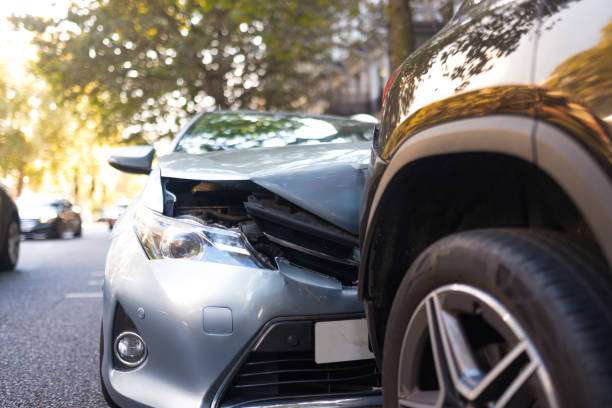
When it comes to car insurance, understanding your options is crucial for protecting your vehicle and finances. Two of the most common coverage types are comprehensive and collision insurance. While they sound similar, they cover very different scenarios. In this guide, we’ll break down their pros and cons, when each is applicable, and how to choose the right coverage for your situation.
1. What Is Comprehensive Car Insurance?
Comprehensive car insurance covers damage to your vehicle caused by events other than a collision. It’s often referred to as “non-collision coverage.”
What It Covers:
- Natural disasters (e.g., floods, hail, earthquakes).
- Theft and vandalism.
- Falling objects (e.g., trees, debris).
- Animal-related damage (e.g., hitting a deer).
- Fire damage.
Example Scenario:
If a tree branch falls on your car during a storm, comprehensive coverage will pay for the repair costs (minus your deductible).
2. What Is Collision Car Insurance?
Collision insurance covers damage to your vehicle resulting from a collision with another vehicle or object, regardless of who’s at fault.
What It Covers:
- Accidents with other vehicles.
- Collisions with stationary objects (e.g., fences, poles).
- Single-car accidents (e.g., hitting a curb or pothole).
Example Scenario:
If you rear-end another car, collision insurance covers the repair costs for your vehicle (minus your deductible).
3. Pros and Cons of Comprehensive Insurance
Pros:
- Covers a wide range of non-collision incidents.
- Essential for protecting your car against natural disasters and theft.
- Often required if your vehicle is financed or leased.
Cons:
- Typically has a deductible, which you’ll need to pay out of pocket before the insurer covers the rest.
- Doesn’t cover collision-related damage.
- Can be unnecessary for older or low-value vehicles.
4. Pros and Cons of Collision Insurance
Pros:
- Provides coverage for accidents, regardless of fault.
- Offers peace of mind for drivers who frequently commute or travel.
- Often required by lenders for financed vehicles.
Cons:
- Higher premiums compared to liability-only policies.
- Doesn’t cover non-collision incidents like theft or weather damage.
- May not be cost-effective for older vehicles with low market value.
5. Scenarios Where Each Is Applicable
Understanding when each type of coverage applies can help you decide whether you need one, both, or neither.
Comprehensive Insurance Scenarios:
- A hailstorm damages your car’s roof.
- Your vehicle is stolen while parked in a public lot.
- A deer jumps in front of your car, causing significant damage.
- A fire breaks out in your garage, damaging your vehicle.
Collision Insurance Scenarios:
- You rear-end another car at a stoplight.
- You accidentally hit a mailbox while backing out of your driveway.
- Your car rolls into a ditch after sliding on ice.
- Another driver crashes into you, and they don’t have adequate insurance.
6. Do You Need Both Comprehensive and Collision Insurance?
While liability insurance is mandatory in most states, comprehensive and collision coverage are optional. However, there are situations where having both is a smart choice.
Consider Both If:
- Your car is financed or leased (lenders often require both coverages).
- Your vehicle is relatively new or has significant market value.
- You live in an area prone to natural disasters or high theft rates.
Opt-Out If:
- Your car is old or has a low resale value (repair costs might exceed the car’s worth).
- You can afford to replace the vehicle out-of-pocket in case of damage or loss.
7. How to Choose the Right Coverage
Selecting the right coverage depends on your financial situation, driving habits, and the value of your car.
Steps to Decide:
- Assess Your Car’s Value: Use tools like Kelley Blue Book to determine whether your vehicle is worth insuring with comprehensive and collision coverage.
- Consider Your Risk Factors: Do you live in an area prone to theft, severe weather, or accidents?
- Evaluate Your Budget: Ensure you can afford the premiums and deductibles for both types of coverage.
- Review Your Driving Habits: If you frequently drive long distances or in busy traffic, collision insurance might be more essential.
8. Cost Comparison: Comprehensive vs. Collision Insurance
The cost of each type of coverage varies based on factors like your car’s value, location, and driving history.
| Factor | Comprehensive Insurance | Collision Insurance |
|---|---|---|
| Average Cost | $134 annually | $290 annually |
| Risk Focus | Non-collision incidents | Collision-related incidents |
| Best For | Protecting against theft or weather | Frequent drivers and commuters |
Note: Bundling both coverages often results in discounts from insurers.
9. Bundling Comprehensive and Collision Insurance
Many drivers opt to bundle comprehensive and collision insurance to maximize their protection.
Benefits of Bundling:
- Simplifies policy management by combining both coverages.
- May qualify you for multi-policy or bundling discounts.
- Ensures full protection against a range of potential risks.
Example:
If a storm causes a tree to fall on your car, followed by a collision while driving to the repair shop, having both coverages ensures you’re fully protected.
Conclusion
Comprehensive and collision car insurance each serve distinct purposes, offering protection against different types of risks. Comprehensive covers non-collision events like theft and weather damage, while collision focuses on accidents involving other vehicles or objects. By understanding their pros, cons, and applicable scenarios, you can make an informed decision about which coverage suits your needs and budget. Whether you choose one, both, or neither, the key is to align your coverage with your financial goals and driving habits.
Read More…
FAQs
1. Is comprehensive insurance more expensive than collision?
No, comprehensive insurance is generally less expensive than collision coverage due to the nature of risks it covers.
2. Can I drop collision insurance on an older car?
Yes, if your car’s value is low and repair costs exceed its worth, dropping collision insurance may be a cost-effective choice.
3. Do comprehensive and collision insurance cover rental cars?
Yes, both types of coverage may extend to rental cars, depending on your policy. Check with your insurer for details.
4. Are comprehensive and collision insurance required by law?
No, they are optional in most states but may be required by lenders for financed vehicles.
5. Can I combine comprehensive and collision insurance with liability coverage?
Yes, most policies allow you to combine these coverages for broader protection.
